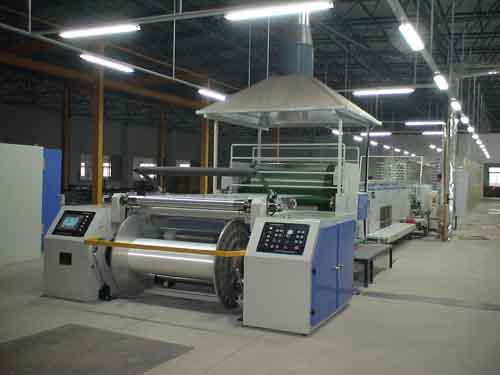Healthy Care,Hydrated Silica In Toothpaste,Silica For Sensitive Teeth,Improves The Feel And Texture Henan Minmetals East New Materials CO. LTD. , https://www.eastinsulations.com After the baptism of the financial crisis, a group of strong textile machinery companies came to the fore, but a considerable number of companies lacking core competitiveness had no choice but to close. A textile machinery company in Zhejiang had been well sold before 2008, but it quickly fell after the financial crisis. The CEO of the company after a deep reflection that after a few years, despite the market is good, but the technical content of corporate products is not high, the profit is very low, and low profitability led to the company can not come up with funds for technological innovation. The result of this vicious circle is that if the market has trouble, the company will be able to escape.
After the baptism of the financial crisis, a group of strong textile machinery companies came to the fore, but a considerable number of companies lacking core competitiveness had no choice but to close. A textile machinery company in Zhejiang had been well sold before 2008, but it quickly fell after the financial crisis. The CEO of the company after a deep reflection that after a few years, despite the market is good, but the technical content of corporate products is not high, the profit is very low, and low profitability led to the company can not come up with funds for technological innovation. The result of this vicious circle is that if the market has trouble, the company will be able to escape.
When talking about some of the major textile machinery companies in the financial crisis, it is difficult, Gao Yong, chairman of the China Textile Machinery and Equipment Industry Association believes that these companies are often doing very big, but do not be strong, not specialized, not refined, survivability And the ability to resist crisis is very limited. These companies must seriously consider the way out for the future and use this opportunity for adjustment to achieve a complete change. For the whole industry, the financial crisis will eliminate a large number of extensive enterprises, give birth to a large number of large enterprises with real scale and strength, and enhance the overall competitive strength of the entire industry, which is a good opportunity to speed up industry consolidation. Where is the way to adjust the transformation? With the rapid development of the textile industry in recent years, the Chinese textile machinery industry has also taken advantage of the development, making China the world's largest textile machinery manufacturing country. However, the size of China's textile machinery enterprises is generally small, and the technical content of products is low. At present, the number of home-made equipment on the Chinese textile machinery market accounted for 80%, but the sales accounted for less than 50%. In the first 11 months of 2009, the textile machinery industry realized a total profit of 2.451 billion yuan and gross profit margin was only 15.23%; loss-making enterprises had a loss of 676 million yuan, with a loss of 17.57%.
Obviously, the financial crisis has exposed the drawbacks of the textile machinery industry with its own low technical content and low profitability. It is imperative for the entire industry to make adjustments and transformations.
The textile machinery industry is the biggest one involved in the restructuring and transformation of the textile machinery industry. It is understood that some small businesses with “small and good boats turning around†have begun to adjust in 2009, but several large, industry-leading companies have started to look for adjustments as early as 2008, but the adjustments have been made. Slightly slow.
One of these problems has been plaguing these companies. Should adjustments and transformations be made completely to take advantage of the advantages of spinning machine manufacturers to have common equipment and actively reach out to other industries? Or stick to the main business of textile machinery?
In this regard, Gao Yong believes that, from the current situation, turning to the current hot industry sector has been an effective attempt, such as CNC machine tools, agricultural machine tools, auto parts and so on, the market prospects of these industries are relatively good, worth the company to attention. In addition, even in the field of textile machinery can make a difference.
Specifically, companies should first base their original products on shifting from low-grade to high-end products, which is also the future trend of the industry. Second, companies can focus their attention on areas that are not yet involved and developed in the textile machinery industry. The development and utilization of some new fibers in related fields has brought new demands on textile machinery equipment. For example, for fiberglass fabrics for wind turbine blades, multi-axial warp knitting machines, rapier looms, and air jet looms are used in the processing process; there are also plaiting machines for woven nonwoven fabrics made of recycled fibers. Hot-rolling equipment is now also not involved in the company, in addition to processing geotextiles with a wide range of looms, weaving machines such as strong beaten the output are also very limited.
In addition, some relatively small traditional industrial equipment also has blind spots for development. For example, wool semi-worsted yarns that have been fired for several years have not been equipped with special equipment. Enterprises generally buy old carding machines and spinning frames, and then do some modifications on their own. The individual Mafang company also used cotton spinning equipment or wool spinning equipment instead because it could not buy supporting equipment.